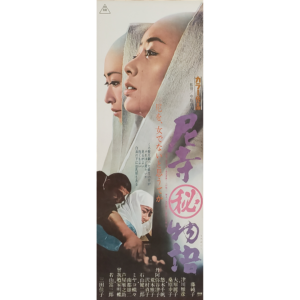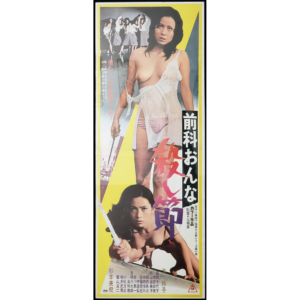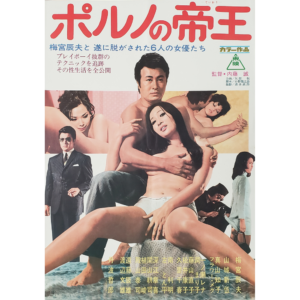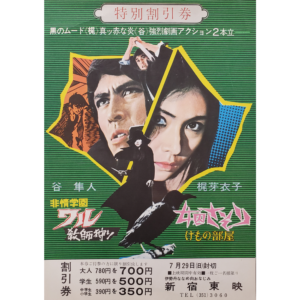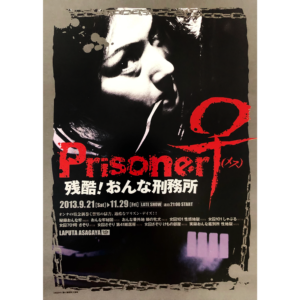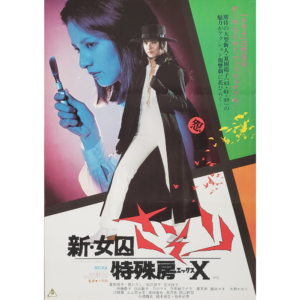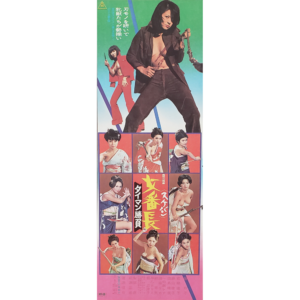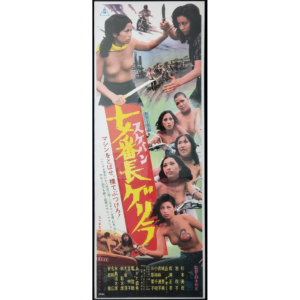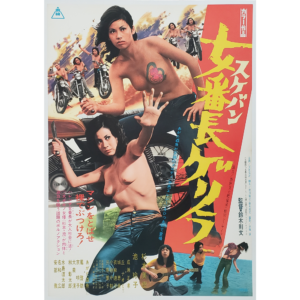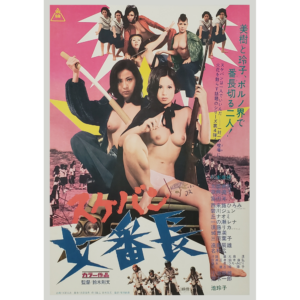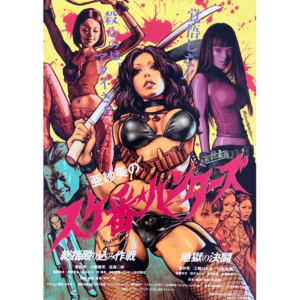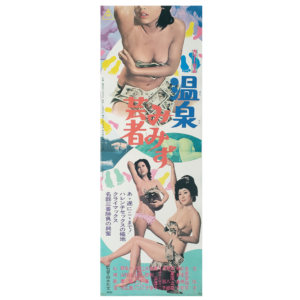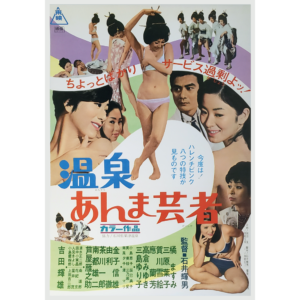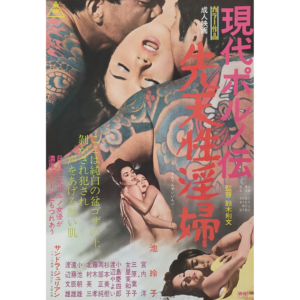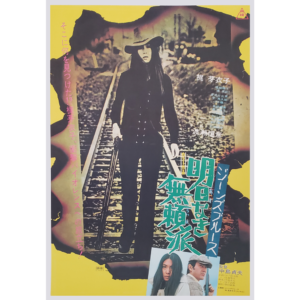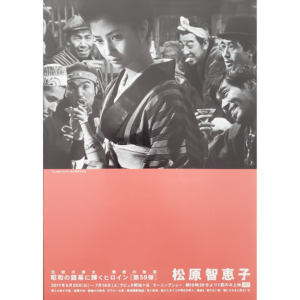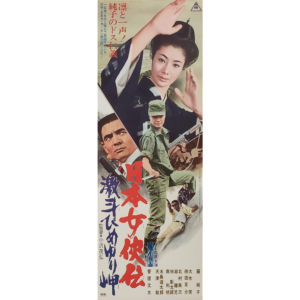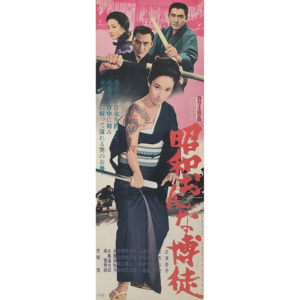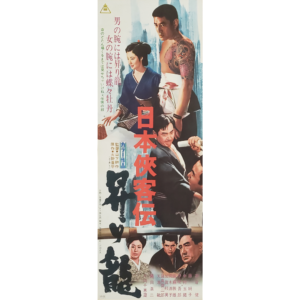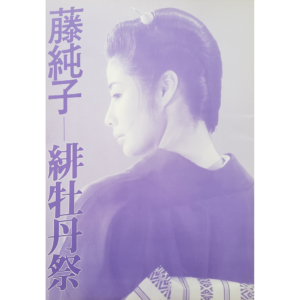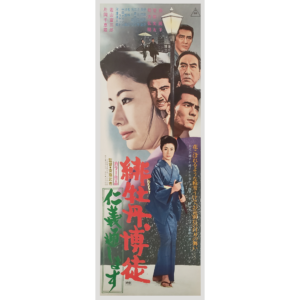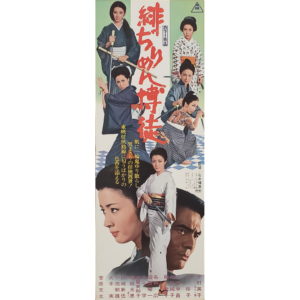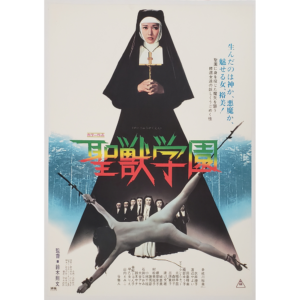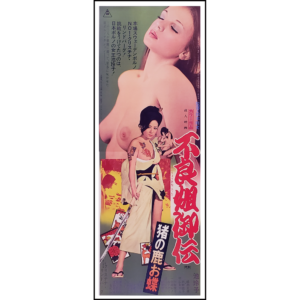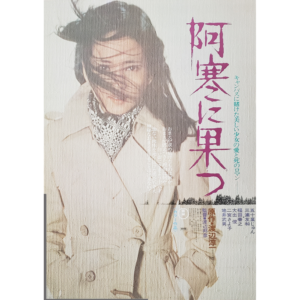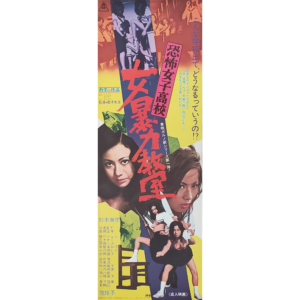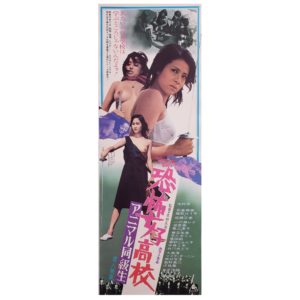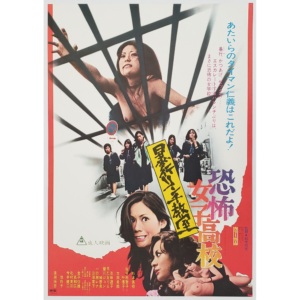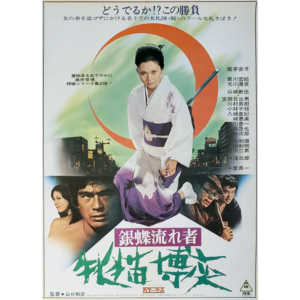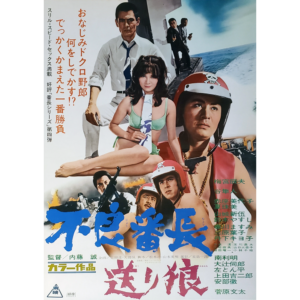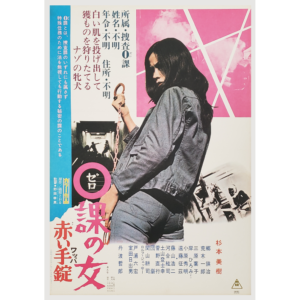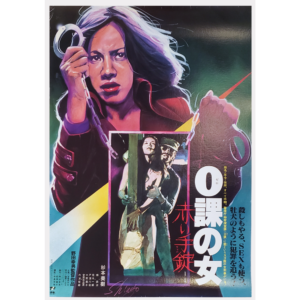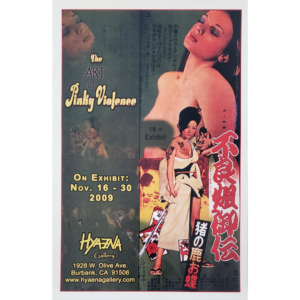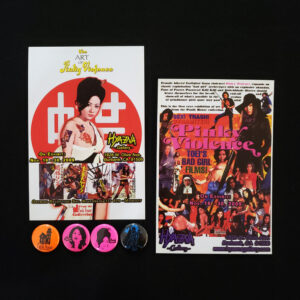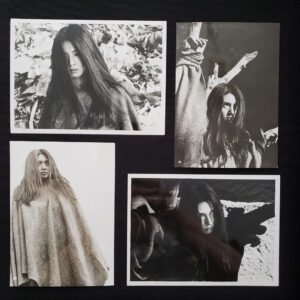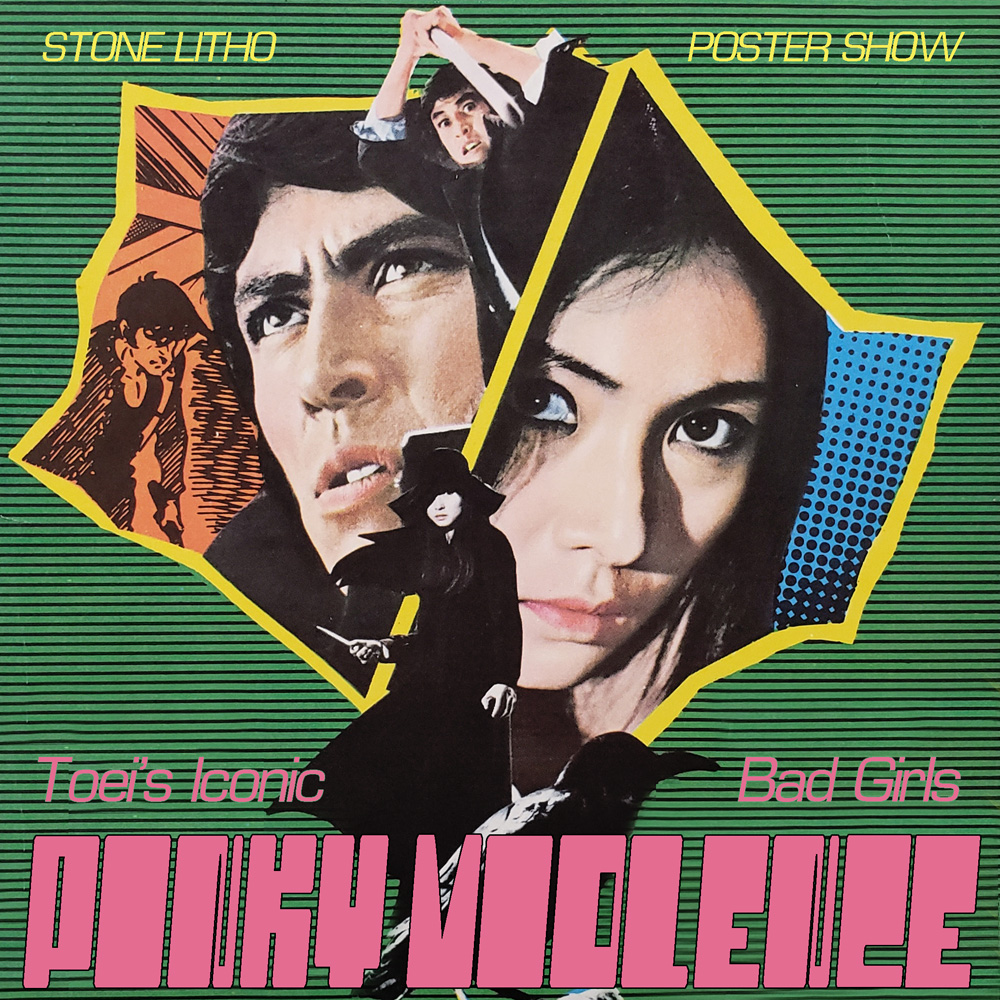
01 Jul Pinky Violence: Shock, Awe, Liberation
July 1 – 30, 2021
Opened M-F, 12-6PM
Or by Appointment after hours and on Weekends
The Toei produced, female-driven, action/exploitation films known as “Pinky Violence” reached their crescendo in the late 1970s – and are almost single-handedly responsible for the first wave of Japanese feminism.
Looking at the key-art on these posters can be quite deceiving, and that was the point. A handful of Japanese writers, directors, and stars dedicated almost a decade to producing films with young, badass ladies as the leads, frequently with overt messages of empowerment. By using nudity as a draw for male viewers they were able to subvert the culture away from the chauvinism and misogyny that ruled the day and change the expectations that saddled all young women. These tastemakers had seen the political power of pinku eiga (“pink films”), which were a category of erotic films ranging from sensual to explicit that had ushered in an era of sexual liberation just a few years prior. Those films played primarily in the Japanese equivalent of Red Light Districts with an occasional Art House run. But the Pinky Violence films combined the sensibilities of Shōhei Imamura and Russ Meyer to produce a commercially salacious product steeped in social responsibility that could play in most neighborhood theaters. They often played as the 2nd feature in back of a Toei gangster film, which exposed them to a much wider (and more general) audience. Some of the same actors might appear in both films on those double-bills, which included Ken Takakura, Bunta Sagawara, and Sonny Chiba.
To some western viewers, it must be incredibly shocking to see nudity on a movie poster, but there is no such taboo associated with nudity in many other cultures. Italian, French, and German movie posters as well as those advertising films in post-Franco Spain have been known to promote nudity on their key-art, but almost none as brazenly as the Japanese. And to be fair: these films are still considered exploitation films in the same sense that most 1980s horror and comedy films from the USA can also be categorized as a kind of exploitation. They have nudity, violence, and sometimes even torture and bondage, but what separates the Toei films from their lesser competitors are the victories achieved by the protagonists –often against incredible adversity, and invariably with a social message.
The Toei girls became icons.
Meiko Kaji, who went from playing back-up in the Stray Cat Rock series to headlining several franchises, became a fashion icon for her wardrobe in the Female Prisoner Scorpion series. So lasting an impression was she that contemporary J-pop stars and even their modern Ye-Ye equivalents have copied her signature look of trench coat and wide brimmed hat. Her closest American peer in that capacity would be Jackie Kennedy. Her most famous fans include Yoko Ono and Quentin Tarantino.
Reiko Ike & Miki Sugimoto combined the cool restraint of Clint Eastwood with the unabashed fury of Tura Satana. In the genre masterpiece Sex & Fury, Reiko managed to deliver a performances that was Brando-esque in its power and emotion, while performing a sword ballet with choreography that Donnie Yen could be proud of. Yumi Takigawa would go onto a successful singing and acting career, and is still a staple of Japanese film today. She (along with Meiko Kaji) is recognized as a pioneer of Japanese feminism.
About this collection:
Gallery 30 South owner Matt Kennedy was the founder of Panik House Entertainment, which was the first company dedicated to the remastering and release of these films in the United States. Back in the early 2000s, most of the key art for these films was missing from the Toei vaults, and so Matt had to contact private collectors all over Japan to source them. He amassed one of the largest and most thorough collections of posters and ephemera dedicated to this niche. The first Panik House titles were released on July 2, 2005, providing an anniversary of sorts for this exhibition. The first Art of Pinky Violence exhibition was held in November 2009, and showcased sixteen artworks. This exhibition features almost 50 items, most of which are linen-backed original release movie posters. Linen-backing is a museum recommended archival preservation process that gives the absolute best presentation to the artwork and significantly increases the value. All of our linen-backing was done by Poster Mountain, the Academy of Motion Picture Arts and Sciences‘ preferred restoration experts.
Click here for Pinky Violence: Shock, Awe, a Master’s Thesis about how the Pinky Violence genre provides alternate gender constructs. We wanted to be sure to provide a peer-reviewed point of view.
Contact gallery director Matt Kennedy for purchase or press information.
(323)547-3227 or info@gallery30south.com
We endeavor to host a series of Zoom talks about this exhibition, so we encourage you to follow us on Instagram: @gallery30south
MORE IMAGES FORTHCOMING!
-
Convent Confidential (B4)
$450 -
Delinquent Girl Boss: Worthless to Confess (B2)
$450 -
Criminal Woman: Killing Melody (STB)
$450 -
Criminal Woman: Killing Melody (B2)
$450 -
Erotic Itinerary (B2)
$250 -
Faster Pussycat, Kill! Kill! Signed One Sheet
$1,500 -
Female Prisoner Scorpion: Beast Stable (Chirashi)
$225 -
Female Prisoner Scorpio Film Festival (Chirashi)
$30 -
New Female Prisoner Scorpion: Special Cellblock X (B2)
$250 -
Girl Boss: Escape From Reform School (B2)
$450 -
Girl Boss: Diamond Showdown (B4)
$250 -
Girl Boss: Diamond Showdown (B2)
$450 -
Girl Boss Guerilla (STB)
$450 -
Girl Boss Guerilla (B2)
$450 -
Girl Boss Revenge: Sukeban (B2)
$600 -
Sukeban Hunters (Chirashi)
$30 -
Hot Spring Geisha: Earthworm (STB)
$450 -
Hot Spring Geisha (B2)
$450 -
The Insatiable (STB)
$450 -
The Insatiable (B2)
$250 -
Jeans Blues: No Future (B2)
$450 -
Junko Fuji Film Festival (Chirashi)
$30 -
Lady Boss: Trials of an Okinawa Village (B4)
$150 -
Modern Lady Gambler (B4)
$150 -
Nippon Chivalry: Ascending Dragon (B4)
$150 -
Red Peony Gambler (Pressbook)
$75 -
Red Peony Gambler: Execution of Duty (B4)
$175 -
Red Silk Gambler (B4)
$150 -
School of the Holy Beast (STB)
$950 -
School of the Holy Beast (B2)
$750 -
Sex & Fury (STB)
$1,200 -
Suicide at Lake Akan (B2)
$175 -
Terrifying Girls’ High School: Women’s Violent Classroom (B4)
$250 -
Terrifying Girls’ High School: Women’s Violent Classroom (B2)
$450 -
Terrifying Girls High School: Animal Courage (STB)
$450 -
Terrifying Girls’ High School: Lynch Law Classroom (B2)
$450 -
Torn Priestess (B2)
$250 -
Wandering Ginza Butterfly 2: She-Cat Gambler (B2)
$250 -
Wolves of the City: Wolf Escort (B2)
$250 -
Zero Woman: Red Handcuffs – Style A (B2)
$450 -
Zero Woman: Red Handcuffs (B2) Style B
$450 -
The Art of Pinky Violence 2009 Show Poster
$10 -
Pinky Violence Postcard & Pin Bundle
$10 -
Meiko Kaji Photos (Set of 4)
$100 -
Sex & Fury (Signed/Numbered Litho)
$75 -
Female Yakuza Tale (Signed/Numbered Litho)
$75

